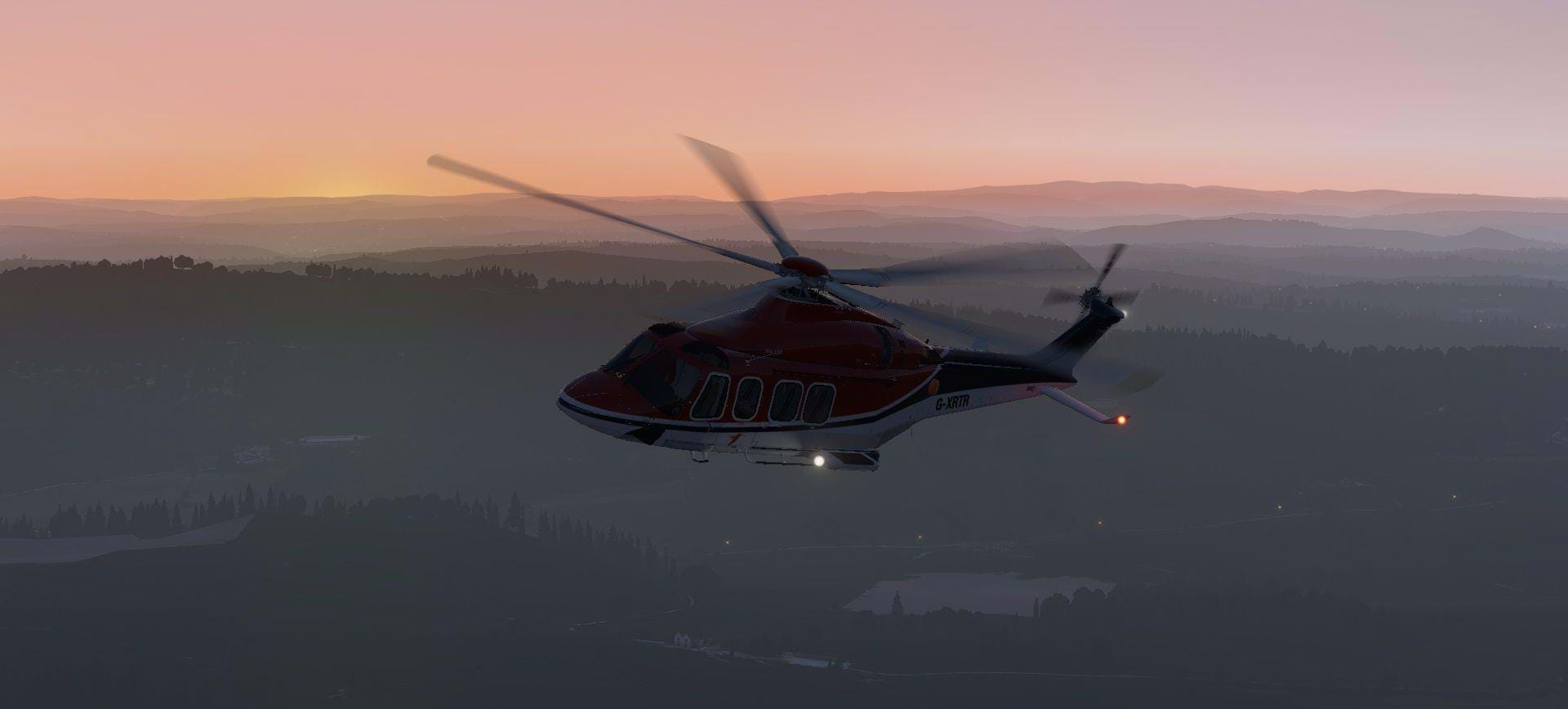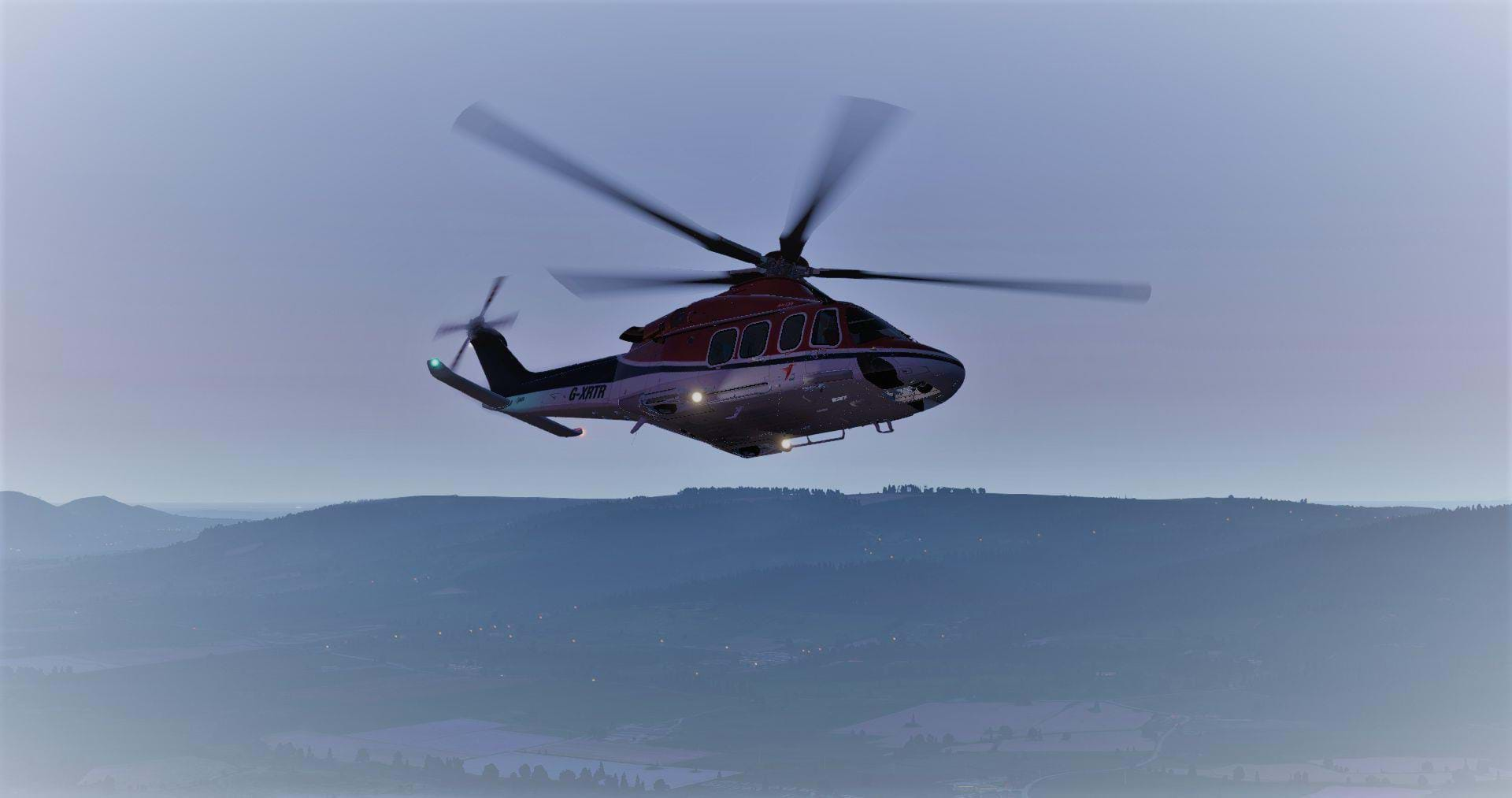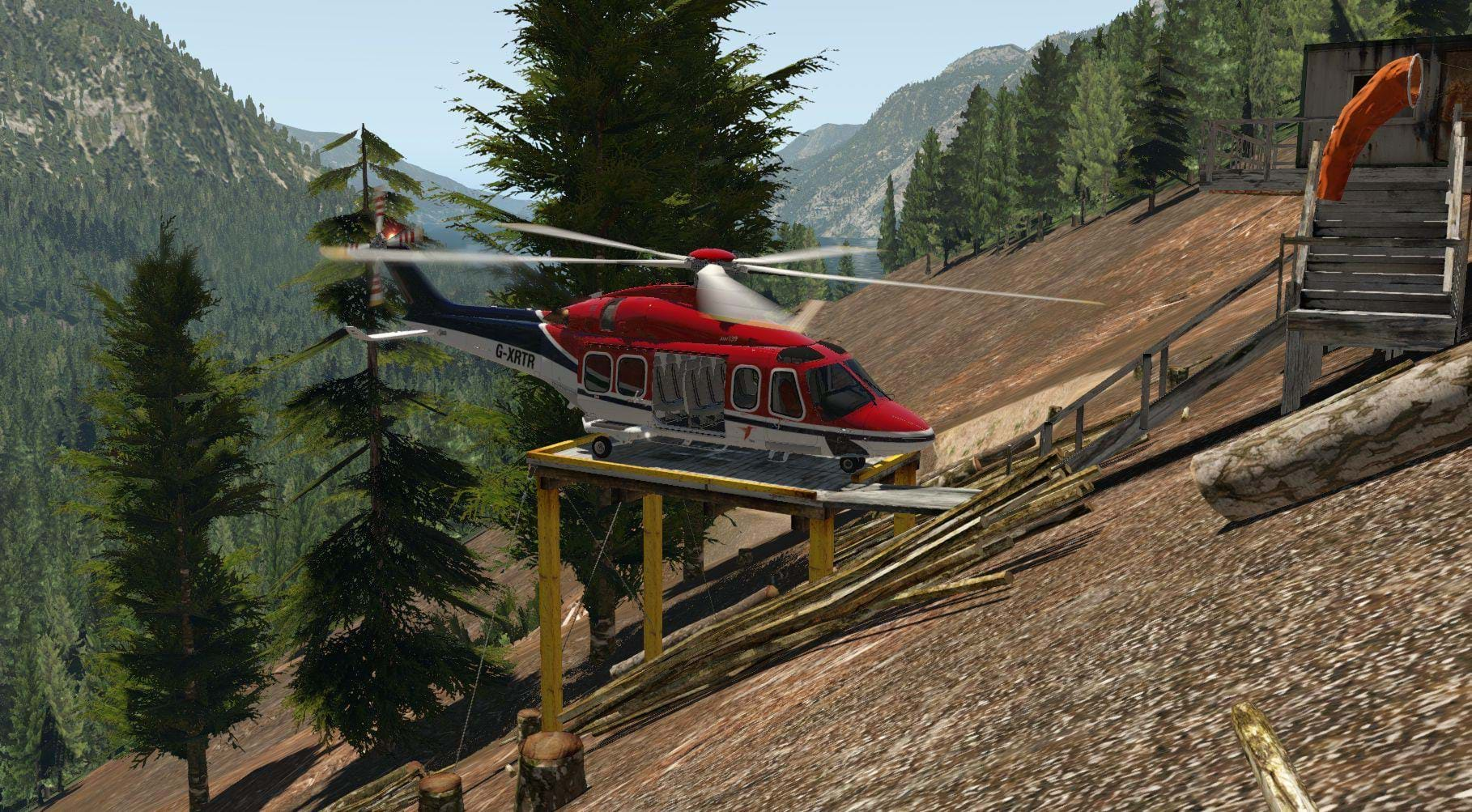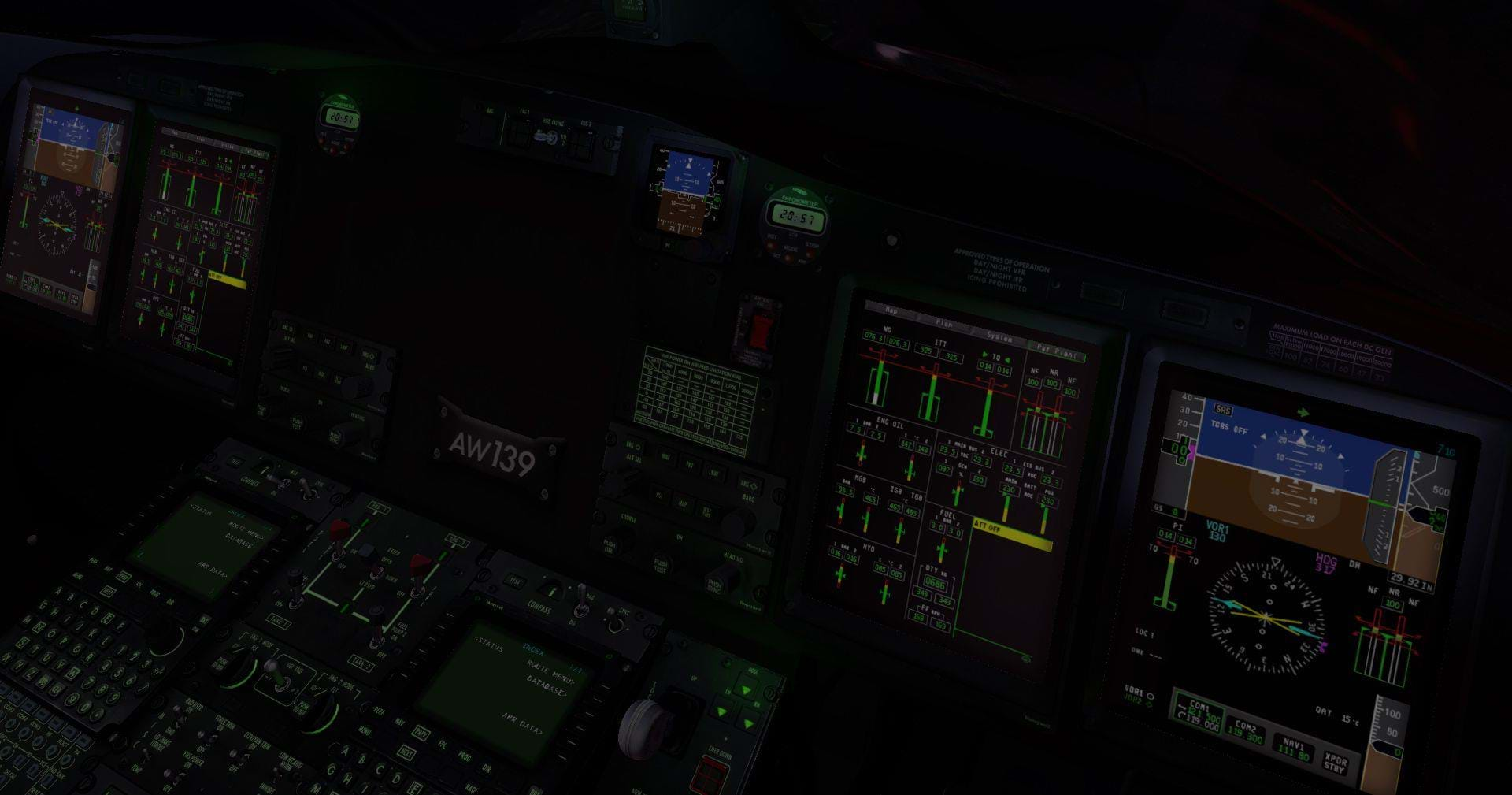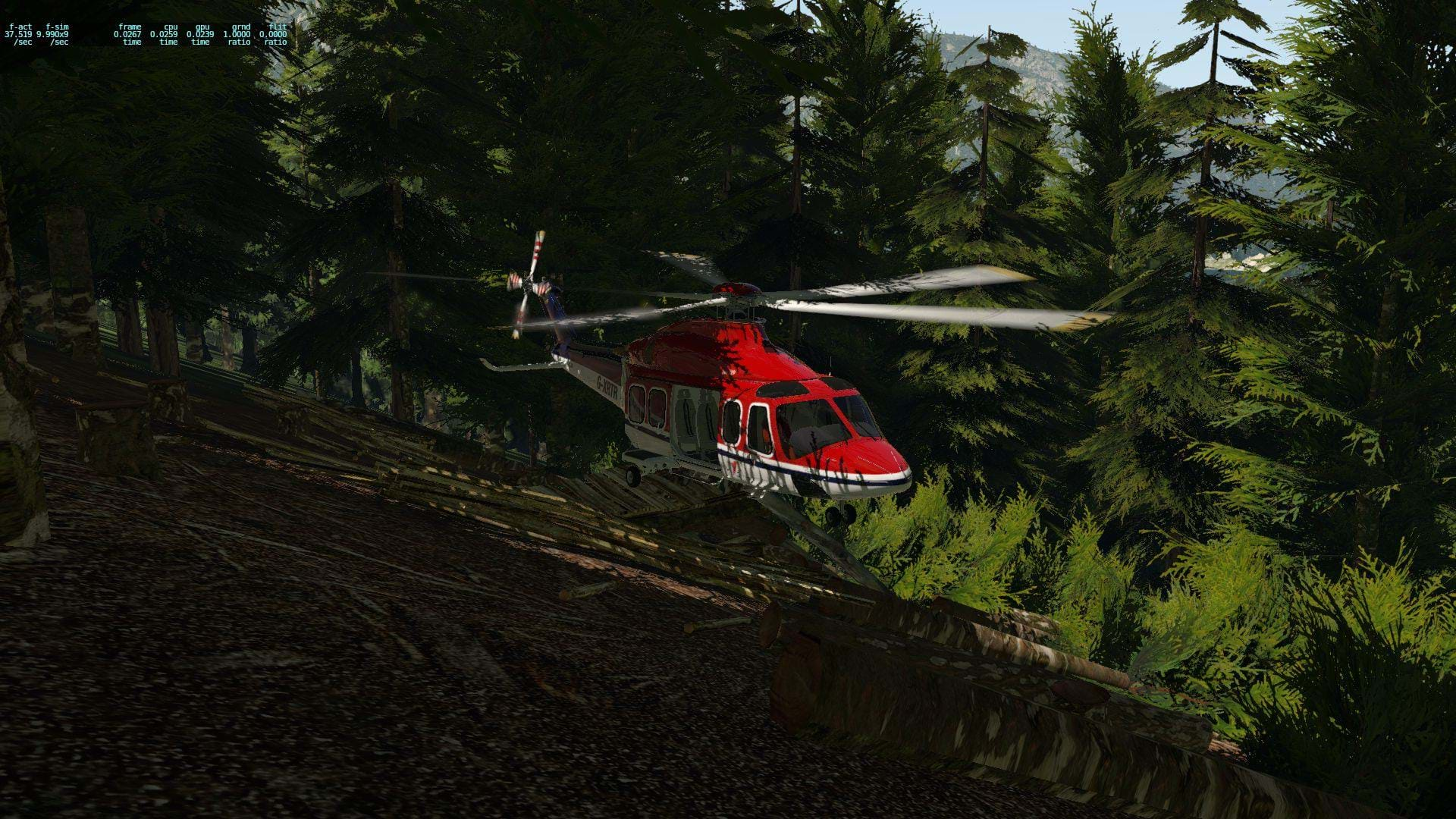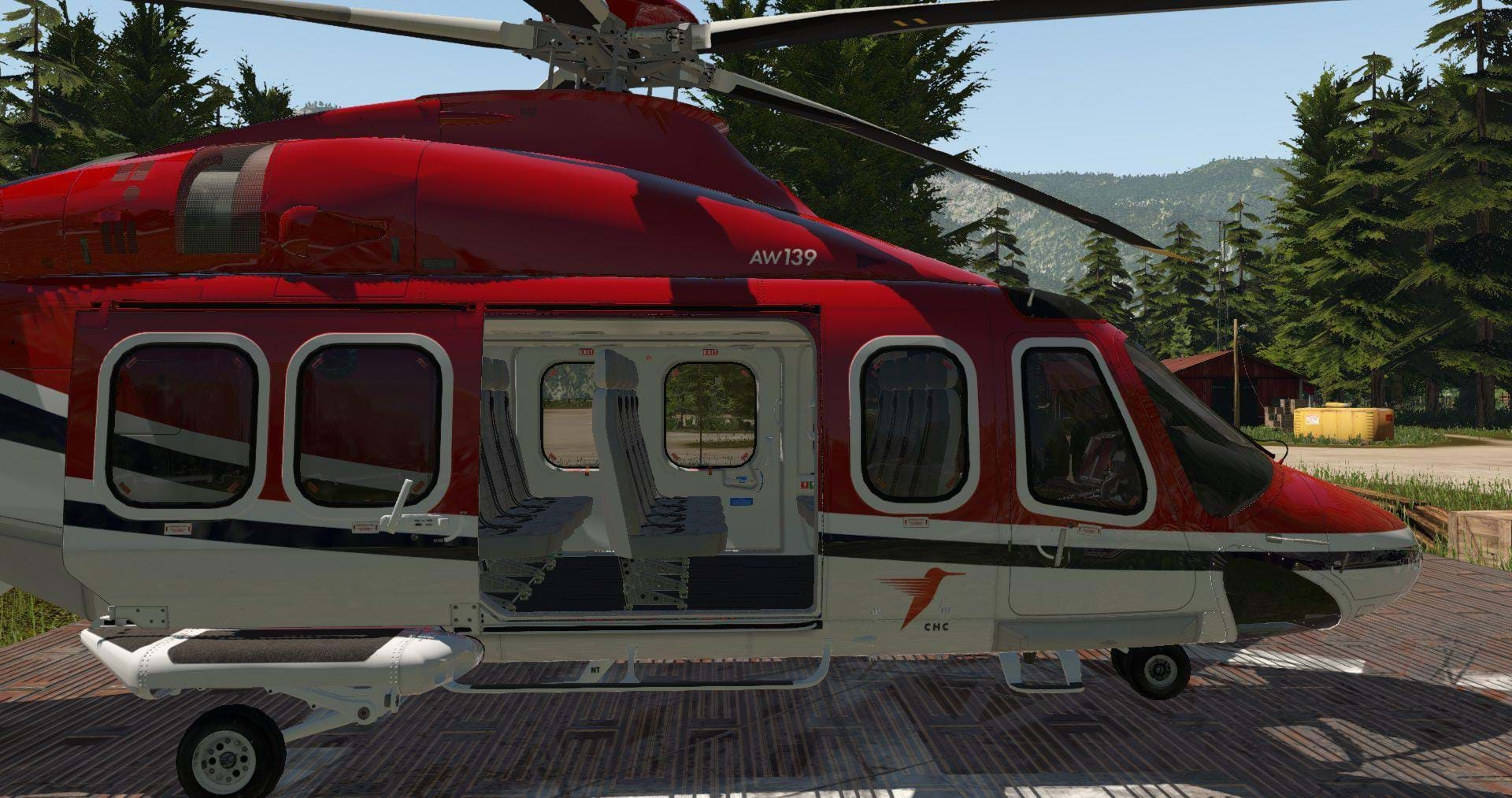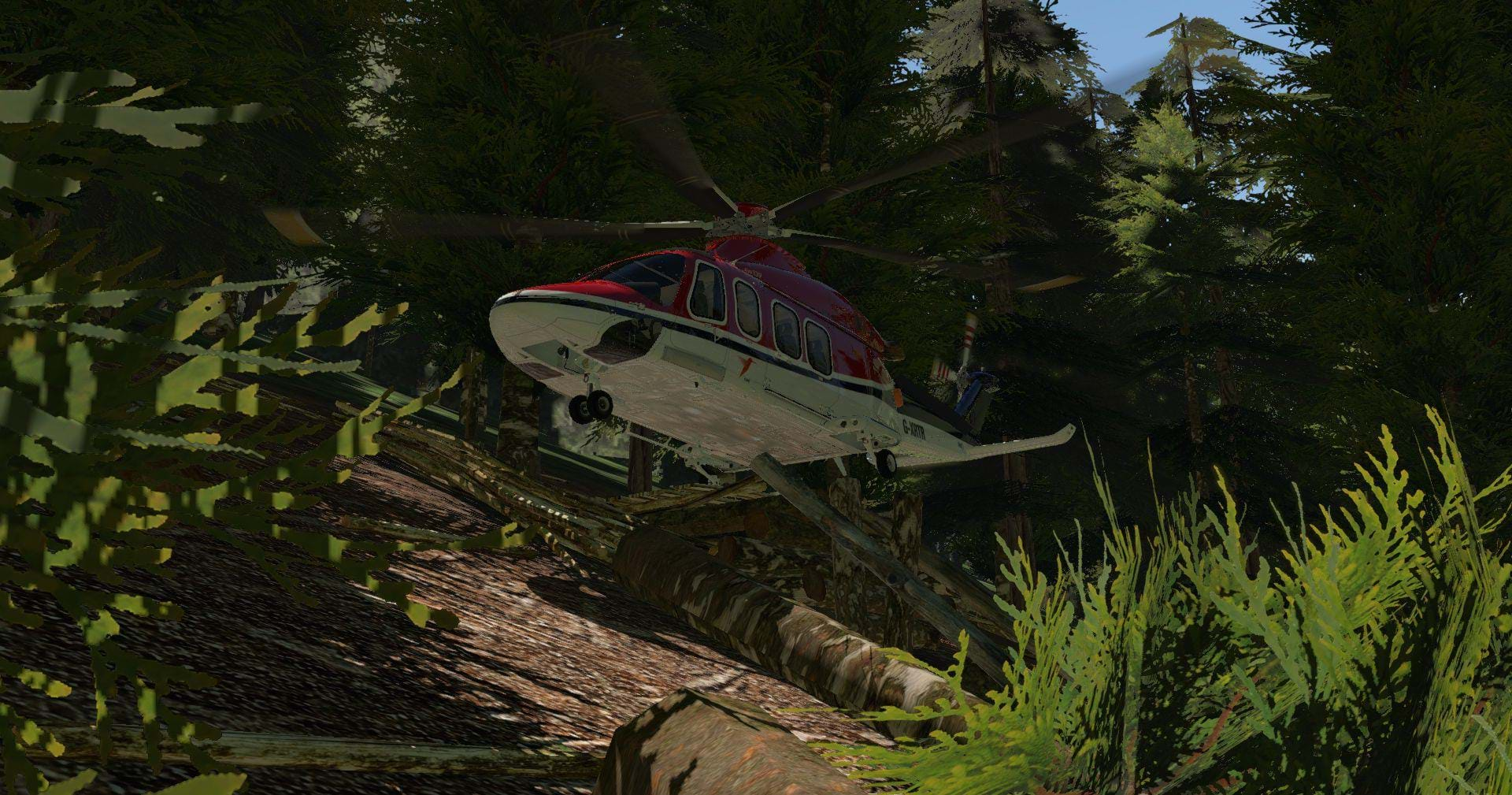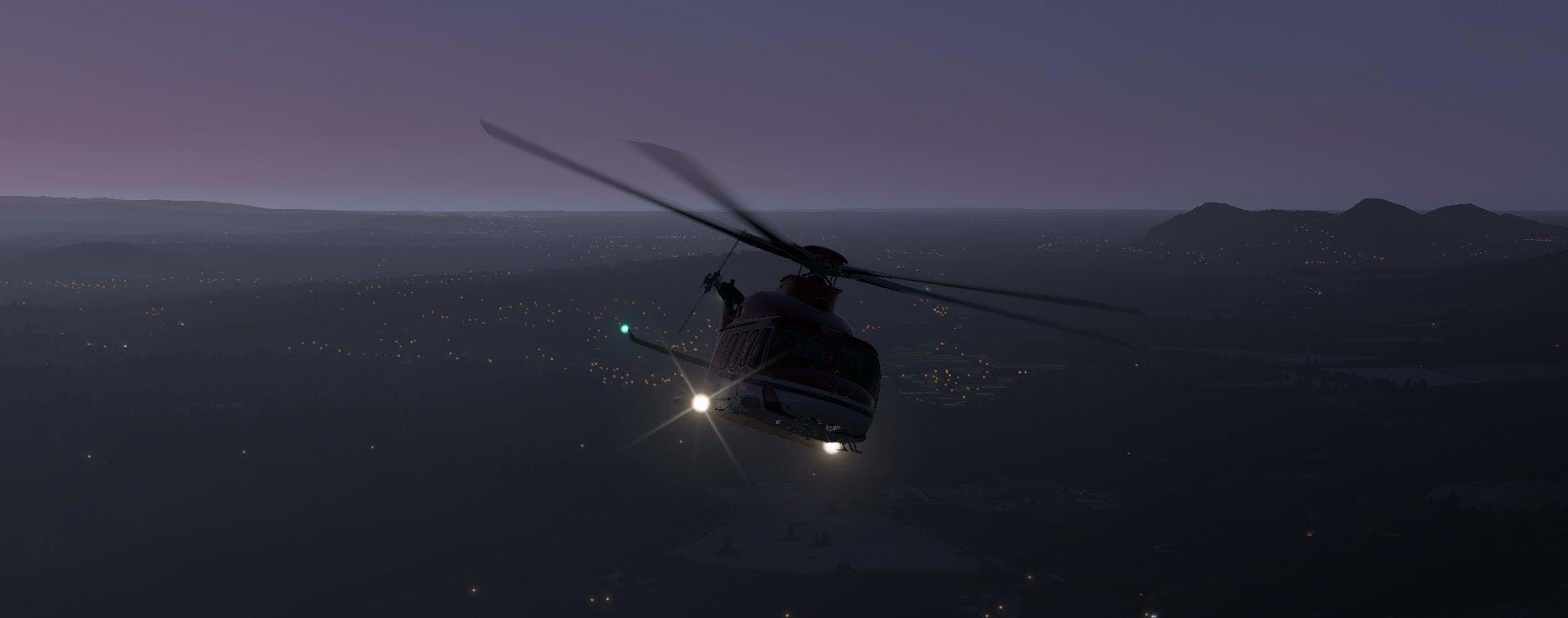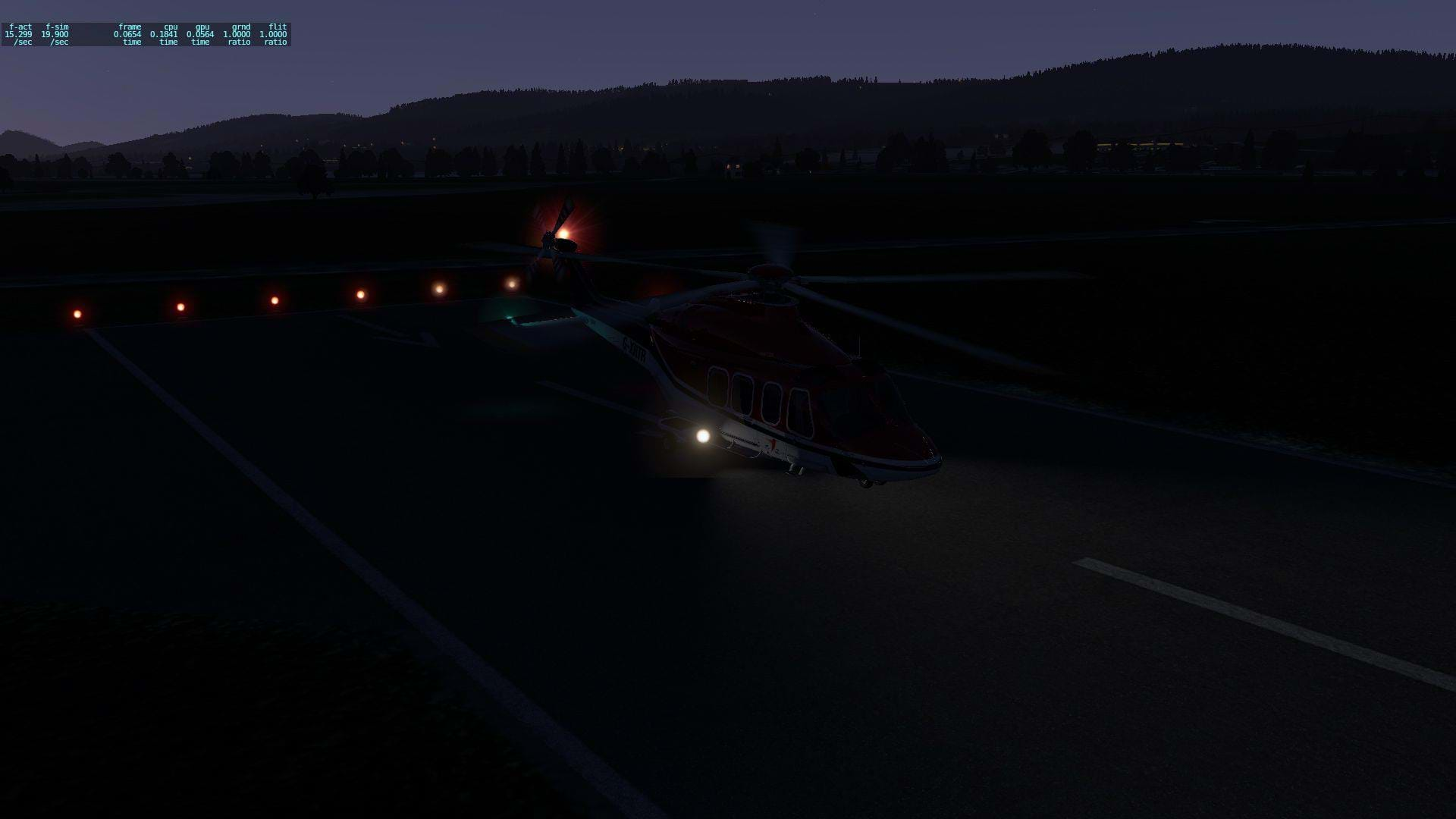How does one start a review on an aircraft birthed from a company with such rich history? Well, naturally, they should start with the history.
Leonardo can trace its origins back to 1948 with The Società Finanziaria Meccanica - Finmeccanica was founded on 18 March 1948 by the IRI-Istituto per la Ricostruzione Industriale (Italian Institute for Industrial Reconstruction). Finmeccanica mainly focused on shipbuilding technologies and mechanical engineering.
Their focus was to acquire shareholdings in fledging, post World War 2 companies and provide the necessary financial support to enable these companies to expand and grow. Many of the notable Italian companies that share global recognition today, can thank Finmeccanica for surviving during this industrial re-structuring. Companies including, Alfa Romeo, FIAT and Aeritalia (Aeritalia alone is responsible for spear-heading and financing many start-ups including the AMX Tornado, Boeing 767, Aérospatiale and Embraer), for example.
Between 1994 and 1997, Finmeccanica switched focus to buying into more defense industry contracts which led to the acquisition of Agusta which eventually transformed to Augusta-Westland in 1998. Augusta had already established a strong standing relationship with Bell helicopters and after the transformation, became BAAC – Bell Agusta Aerospace Company, with the aim of developing a new model of helicopter, the AB139, and the innovative BA609 tilt-rotor aircraft.
In 2014, Finmeccanica launched a strategic re-structuring plan to consolidate and centralize its vast network of processes into one streamlined, homogeneous group; hence, Leonardo is born.
The X-Rotor’s AW139 is based off the real-world, immensely traveled and popular Leonardo AW139 and fits as a staple in a mid-market brand. In a line-up that includes fifteen different helicopter variants, the AW139 hovers smack-dab in the middle between AW109 and AW189.
What sets the AW139 apart is that it belongs to a family of helicopters including the AW139, AW169 and AW189, “part of a family of new generation helicopters, all featuring the same design philosophy and the same certification and safety standards. “-Leonardo Company.
Originally designated the AB139, the AW139 was initially a joint collaboration between Augusta and Bell-Textron, although re-designated after Bell-Textron withdrew from the project. The AW139 is designed as a twin-engine, multi-role helicopter. It features a five-bladed, fully articulated rotor system attached to titanium hub. The helicopter is completed with a four-bladed articulated tail rotor.
An articulated rotor-system utilizes hinges and bearings allowing each blade to lead, lag and flap independently which provides for a smoother ride.
The AW139 is fitted with retractable landing gear and is designed to be flown by a crew of two pilots, with up to 15 passengers accommodated in three rows of five. The AW139 fits right at a vacant niche in the market, being smaller than helicopters like the aging AS332 Super Puma and S-92, yet above smaller ones like the Bell 412. All the flight-testing data that the author researched, describes the handling qualities as domicile and predictable, which indeed, it was.
Flying an Advanced, automated Helicopter
As some of the readers might be aware of, my day job includes flying Chinooks which, in several aspects is very similar to the AW139.
Although much larger than the AW139, the Chinook has several similar qualities as both helicopters fly significantly with automation. Like the Chinook, the AW139 is designed to be flown with SAS, Force Trim and autopilot systems in a semi-active mode.
Meaning, there are aspects of the systems which are expected to be operational when flying normally. Yes, one may choose to disable or turn the systems off, the helicopter isn’t really designed to be operated normally with these systems disengaged. In that regard, the AW139 and Chinook are closely related.
Purists might scoff at this design, preferring rather to stick to “good ol’ stick wiggling without them fancy computers.” Although, in reality, for a working helicopter, this is a silly mentality. When operating a helicopter with a demanding mission-set such as the AW139 where its bread and butter is Search and Rescue, aerial MEDEVAC and long-range passenger transport, these systems are implemented to allow the pilots to multi-task and manage mission parameters rather than just focus on keeping the helicopter right side-up.
This is especially important for Search and Rescue where there is a realistic possibility that a rescue diver is being hoisted onto a pitching deck 50 feet below in 20 knot gusting winds and low visibility. In this instance, the hoist-operator is steering the helicopter and the pilot is merely there to make sure the whirly-bird doesn’t become another boat.
Having an automated flight control system aids to reduce (an already) fatiguing work environment and provide more precise control to the pilot who is, regardless of the autopilot, still wrestling the controls to keep the helicopter stationary and provide precise inputs at the directions of the hoist operator. Where automated systems really make money is in the event there is an emergency during this precarious rescue.
With almost any issue that isn’t catastrophic, this allows one pilot to immediately start trouble-shooting the problem to see if the issue is critical enough to cancel the mission and possibly release the diver or abandon the crippled boat crew. I can attest, in these regards, having an automated flight system is amazing.
Employing the AW139
On my first shake down flight, I did what I usually do – I sat in front of the (terribly short and disappointing) manual and tried to figure out what button pushes did what. I felt that the manual could have used a lot of work. There is a good breakdown of which panels do what and where to find flight critical information, but generally, I thought this could use more detail and more explanation about what systems did what and where to find the critical buttons to change modes, screens and interact with the systems of the helicopter.
I could imagine that an un-initiated simulator pilot just picking this manual up without any kind of experimentation into this type of helicopter, would get frustrated pretty quickly (as I did). One section I appreciated of the manual would have to be the “common practices” for flying the helicopter through normal phases of flight.
It was good to see that there were recommendations, although I didn’t use any of them! I did appreciate that X-Rotors explained buttons on the cyclic and thrust lever and which ones should be mapped to fully use the autopilot system. This is a note many developers could use!
Climbing into the cockpit of the AW139 is a very nice place to be. I know this because the Maryland State Police was kind enough to let me sit in theirs when our Chinooks were transiting their territory on our way back home last summer.
The front dash sits at a comfortable height whereupon its easy to imagine shorter pilots or taller pilots wouldn’t have any issues adjusting flight controls or having issues with restrictive visibility around the helicopter. Another aspect I appreciated was that the center console sat about mid-thigh (in the real helicopter - without doing any seat adjustments) so it seemed kind of elevated. This was nice because it meant that I didn’t have to look very far to adjust anything on the center console.
The X-Rotors AW139 did a fine job of simulating how well-laid out and user-friendly this cockpit is. The textures were crisp and well placed. I would have liked to seen more detail, a common complaint I have with most X-Plane helicopters. It seems that most developers use a very “sterile” version of what the panel and textures are supposed to look like and in reality, larger corporate helicopters probably don’t see half the abuse that my normal mounts endure, but nevertheless, these machines do take on wear and tear and seeing that reflected would be a welcome change.
An additional note on textures: the windshield reflections seemed too strong and in certain light, the bright orange flight suit of the pilot seemed to make it nearly impossible to see out of the big canopy. Now, if I were test-flying helicopters in a bright orange flight suit, I’m sure this is probably a very real annoyance. Although, in the way most people will likely simulate using this helicopter, its sort of silly to stick to an orange “flight test” flight suit.
One regard in which I will credit X-Rotors is that the 3D modeling of the helicopter was done very well. I didn’t find any issues with how the helicopter was built or how the various components looked in virtual reality (opposed to some aircraft where components can look shrunken). Quite the opposite, the X-Rotors AW139 looked beautiful.
Starting the engines, I found my first glitch. The VR “hot spots” were partially implemented but even with using a mouse cursor, the engine start levers only partially worked (of note, it seemed that engine one often got stuck) and therefore, created some frustrating hassles trying to start. The number two engine start switch worked as advertised, although was different than the number one in that there wasn’t a start-function light working (on engine one, when you crank the engine, there is a green band that illuminates beneath the switch to show its operating but engine two didn’t have this).
I’m not sure if the real AW139 has this feature or if it was cockpit lighting gone haywire. Either way, once I managed to finally crank, needles, temperatures and pressures displayed beautifully on the EICAS page. I slowly advanced the Engine Power Levers to flight and took the helicopter off from the pad and entered the pattern. The flight model handled as advertised: predictable and docile. I didn’t note any anomalous flight conditions that were irritating or out of place. Yet, I also didn’t note anything that was earth-shatteringly amazing either. Advanced dynamics seemed as if they were not present or very minimal but that’s not necessarily a bad thing. Not being an AW139 rated-pilot, I’m not sure what design features are incorporated to nullify these.
I know on the Chinook, there are several specialty features that “work for the helicopter” and attempt to eradicate the un-desirable affects that naturally occur. As evident in the design progression of the AW line of helicopters, it appears several features have been included to greatly pacify many of the pitch and roll aerodynamic forces that smaller helicopter experience. Additionally, SAS and autopilot functions also work to minimize the cyclic and pedal workload felt by the pilot. All of this aside, the helicopter flew beautifully and like a large, 15,000-pound helicopter.
I next moved into advance maneuvers to really try to work out the flight model and see if I could find glaring faults. Disappointingly, I didn’t find much. I did quick-stops, maximum performance take-offs, landings and roll-ons, slopes and single-engine flights. The helicopter performed as advertised. In this instance, the less surprising, the better.
After running the flight model through the gauntlet, I came back to the apron and really started to delve into systems simulation and depth.
Here, I found some interesting quirks and deficiencies. I quickly ran through failed-engine scenarios and surprisingly, found that the helicopter systems worked as they should have as I failed the engine. The Torque split was obvious and pronounced, as was the PTIT and momentary Rotor RPM drop until the FADEC managed the engine functions and transferred the load onto the live engine.
I ran the helicopter through several of the same tests that we perform in the Chinook, trying to get the FADEC to hiccup or throw a code but I didn’t find any. All around, the AW139 took the engine failures in stride and performed predictably and comfortably. Even failing an engine from a 50-foot hover required me to reduce the hover altitude at high gross weights to ensure the one good engine didn’t over torque.
I was able to easily establish the helicopter through its several autopilot and SAS functions (including a well modeled force trim) and fly the helicopter beautifully through several different flight profiles. I appreciably liked the auto-hover feature and was able to successfully use this to really fit the helicopter into some tight, confined area’s and do some simulated hoist training. What I also liked was turning all the fancy modes off and flying it like a helicopter. I felt the X-Rotors AW139 handled well with the modes disengaged and really simulated the spirit of a helicopter of this size.
With the good comes the bad
Or rather than bad, the not-so-great.
I did find some glaring issues with working with the FMS, Fuel system and MFDs. The FMS functionality wasn’t entirely complete as there is no execute button on the FMS! It limited and restricted what I could input into the system (in comparison to the default Boeing 737) and was frustrating to try to manipulate. Although, this is one issue that if fixed, would greatly enhance the autopilot functionality which did attempt to capture and maintain the FMS-driven commands.
Additionally, the fuel system seemed to be a bit confused when I would open the cross feed (which is supposed to bypass the dedicated, engine-driven fuel pump and siphon fuel from the second, working fuel pump) and then turning off the respective pump and function of the other engine. Not only did it not seem to transfer fuel, but it also caused an engine failure. Of smaller note, the rotor brake seemed to induce a huge yaw when releasing or turning on and the rotor RPM didn’t function realistically in an autorotation.
A few really big issues that bugged me included the MFD lack of functionality and the Force trim/Auto-hover relationship. Firstly, the MFD pages is what you get. Although there are tabs to switch to other pages, these are not implemented yet and it took me some considerable time to realize this. Meanwhile, I pushed every button, knob and screen to try to even just pull up a map page. I would have loved to see more map/MFD page functionality or even integration of the Garmin 750 until those functions are fully realized.
One consistent issue that quickly became irritating was the auto-hover/force trim relationship. Although separately the modes function well, if an auto-hover is attempted without the force trim, then the cyclic gradually displaces further and further aft until one cannot get full forward travel out of the cyclic.
What this means is that if you’re flying and activate the auto-hover, then position the helicopter for the hover, gradually you will lose forward cyclic travel. This isn’t stated anywhere in the manual and I don’t think this function co-exists in the actual helicopter. In the Chinook, “Force Trim” is always active but this doesn’t limit one’s ability to really fly the helicopter or use the respective modes. Any cyclic displacement greater than 1/8th of an inch manifests into a movement.
On the AW139, the force trim “locks” the cyclic into a position and when coupled with the auto-hover, saturates the flight controls to the extent that it sort-of breaks the flight model. Also, I felt the auto-hover required too much cyclic displacement to fine-tune the hover position; almost full deflection.
Despite these, I can also understand just how complex and code-breaking automated flight computer simulations can be and am very pleased with the limited-functionality that has already been provided.
Yet, having more functionality and panel candy would have been nice.
The manual alludes to a SAGEM flight display yet, none is present. I do look forward to when this is implemented because I think it would greatly enhance the functionality of the helicopter. Also, I believe when publishing a dedicated module for a simulator, we shouldn’t be paying for a beta product. I (and I’m sure the other customers) really want a finalized product. Having glitches and errors is normal and common in any product and we can appreciate and expect that. But having entire sections that are not ready yet really does dampen the product satisfaction.
Post flight
The X-Rotors AW139 is a beautifully rendered and textured helicopter loaded with a smattering of nice features and good functionality. Night lighting is beautiful - no easy task and often overlooked - accurate but sufficient cockpit Illumination can make or break a modules immersive experience and this one nails it.
I feel it’s a step in the right direction for X-Plane modules and X-Rotors and hope to see more competition in the market place for bringing larger, full-functioning helicopters to the customer.
Sure, I would have liked to see more configurations and cabin layouts. I feel the X-Rotors AW139, much like the real-world AW139, could have filled an essential niche in the X Plane community. Having the ability to fly a law enforcement, SAR, MEDEVAC configuration would have really placed the X-Rotors AW139 in a class of its own.
I feel as the module is, in its current state, really is a missed opportunity and this is disappointing because there are so many great things done with this module as is. I look forward to X-Rotors really building and developing this module further and hopefully, making it the stand alone medium-class helicopter that X Plane users really are craving. I hope they take up that challenge.

